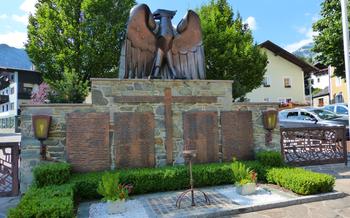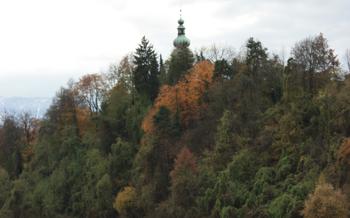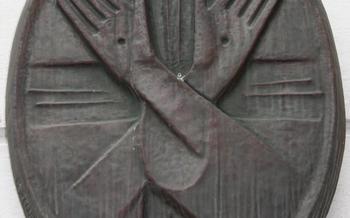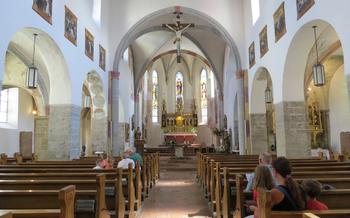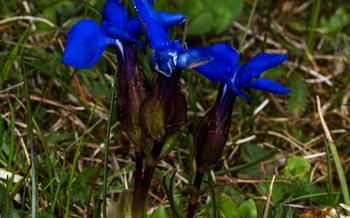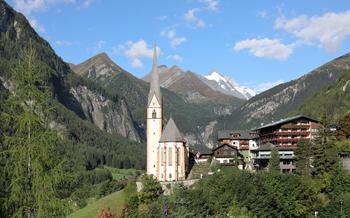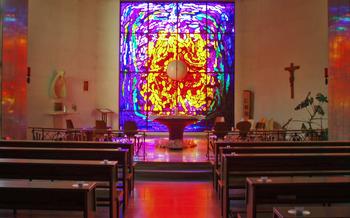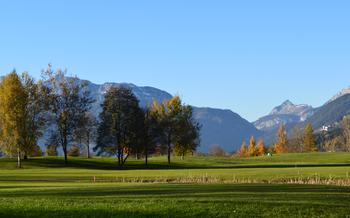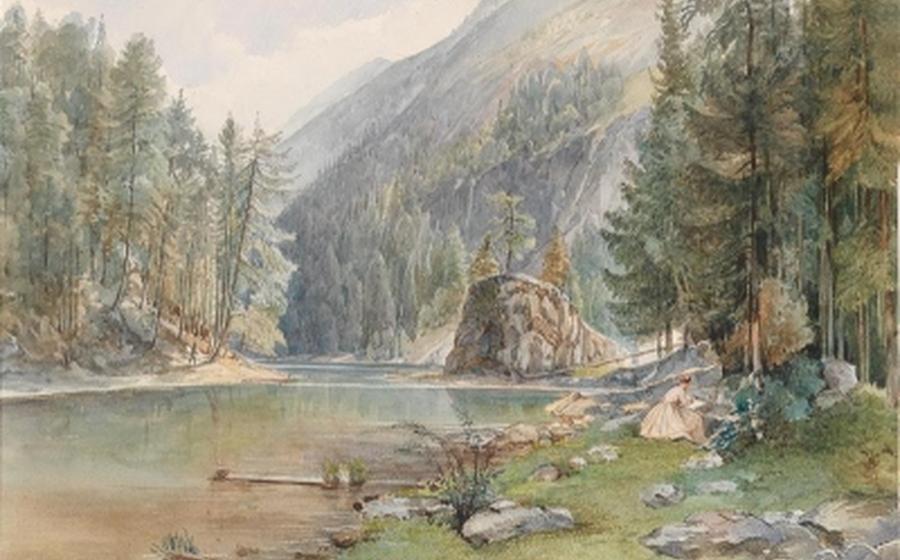
The Parish Church of St. Peter and Paul in Nußdorf Debant
- The Parish Church of St. Peter and Paul in Nußdorf Debant: A Historical Gem
- Stepping into the Church: Awe-Inspiring Interiors
- A Journey Through Time: The Church's History
- Exploring the Village of Nußdorf Debant
- The Churchyard: A Place of Serenity
- Unveiling the Symbolism: A Deeper Look
- The Church Tower: A Symbol of Resilience
- The Church's Role in the Community
- Unique Features: What Sets it Apart
- Restoration and Preservation Efforts
- Visiting Tips: Making the Most of Your Visit
- Local Festivals and Events
- Nearby Attractions: Exploring the Region
- The Church's Legacy: Enduring Impact
- Insider Tip: Hidden Gems and Local Secrets
The Parish Church of St. Peter and Paul in Nußdorf Debant: A Historical Gem
Nestled in the picturesque village of Nußdorf Debant, the Parish Church of St. Peter and Paul stands as a testament to the rich history and architectural heritage of the region. Built in the 13th century, the church has undergone several renovations and expansions over the centuries, resulting in a harmonious blend of Romanesque, Gothic, and Baroque elements. Its sturdy construction and intricate details have allowed it to endure the passage of time, becoming a beloved landmark and a source of pride for the local community.
The church's historical significance extends beyond its physical structure. It served as a religious and social center for the village throughout the centuries, hosting important events such as baptisms, weddings, and funerals. It also played a pivotal role during times of conflict, providing refuge and solace to the villagers. The church's enduring presence has made it an integral part of the community's identity, shaping its traditions and values.
Stepping into the Church: Awe-Inspiring Interiors
As you step inside the Parish Church of St. Peter and Paul, you are met with an awe-inspiring sight. The grand altarpieces, boasting intricate carvings and vibrant colors, dominate the chancel. Each altarpiece tells a biblical story, bringing the scriptures to life. The main altarpiece, dedicated to the patron saints Peter and Paul, is particularly impressive, showcasing the mastery of the Tyrolean woodcarvers.
The walls are adorned with exquisite frescoes, depicting scenes from the life of Christ and the saints. The vibrant colors and lifelike figures seem to come alive, inviting you to contemplate their stories. The ceiling is adorned with stunning stained glass windows, bathing the interior in a kaleidoscope of colors. The intricate designs of the windows allow the light to filter in, creating an ethereal atmosphere that enhances the sacredness of the space.
Ornate carvings adorn every corner of the church, from the intricate pulpit to the delicate pews. Each carving is a testament to the skill and dedication of the local artisans who painstakingly crafted them. The attention to detail is remarkable, with each piece contributing to the overall grandeur of the church's interior.
A Journey Through Time: The Church's History
The Parish Church of St. Peter and Paul in Nußdorf Debant has stood majestically for centuries, witnessing the ebb and flow of time. Its history is a tapestry woven with the threads of faith, resilience, and the passage of generations.
The church's origins can be traced back to the 12th century, when a simple Romanesque structure stood in its place. However, it was not until the 15th century that the church underwent a significant transformation, evolving into the magnificent edifice we see today. During this period, the church was expanded and adorned with exquisite Gothic features, including the towering steeple and intricate ribbed vaults.
Over the centuries, the church has undergone several renovations and modifications, each reflecting the changing tastes and needs of the congregation. In the 17th century, Baroque influences were incorporated, adding a touch of grandeur and opulence to the interior. The church also survived the ravages of two world wars, standing as a beacon of hope and resilience amidst the turmoil.
Today, the Parish Church of St. Peter and Paul stands as a testament to the enduring spirit of the community. It is a living monument that has borne witness to countless baptisms, weddings, funerals, and religious festivals, serving as a spiritual anchor for generations of Nußdorf Debant residents.
Exploring the Village of Nußdorf Debant
Nestled amidst the picturesque landscape of East Tyrol, the charming village of Nußdorf Debant offers a delightful blend of history, nature, and local traditions. As you step out of the awe-inspiring Parish Church of St. Peter and Paul, take a moment to explore the quaint streets that unravel the village's rich heritage.
Strolling along the cobblestone paths, you will encounter an array of inviting cafes and traditional inns, where you can savor local delicacies and immerse yourself in the warm hospitality of the villagers. Engage in conversations with the friendly locals, who are always eager to share stories and insights into their way of life.
Nußdorf Debant proudly preserves its customs and traditions, which are showcased during various events throughout the year. From traditional folk festivals to lively markets, there is always something to celebrate in this vibrant village.
Venture beyond the village center to discover hidden gems, such as the idyllic Tristacher See, a pristine alpine lake surrounded by breathtaking mountain scenery. The lake invites you to embark on a leisurely walk or indulge in water sports, offering a refreshing escape from the hustle and bustle of everyday life.
Nußdorf Debant serves as an ideal base for exploring the surrounding region, with a multitude of attractions within easy reach. The majestic Lienz Castle, perched atop a hill overlooking the valley, offers a glimpse into the region's rich history. Take a scenic drive along the Grossglockner High Alpine Road, considered one of the most breathtaking mountain passes in the Alps, and marvel at the awe-inspiring vistas of the Hohe Tauern National Park.
Whether you seek tranquility, adventure, or cultural immersion, Nußdorf Debant and its surroundings have something to offer every traveler. Embrace the charm of this idyllic village and discover the many treasures it holds.
The Churchyard: A Place of Serenity
The churchyard surrounding the Parish Church of St. Peter and Paul in Nußdorf Debant offers a tranquil sanctuary for contemplation and remembrance. Graves and memorials of various ages and styles line the perimeter, each with its own unique story to tell. Some graves feature intricate carvings or inscriptions that provide glimpses into the lives of those buried there.
Amidst the solemnity, the churchyard exudes a sense of peace and serenity. Mature trees cast shadows on the grounds, creating a dappled effect that adds to the tranquil atmosphere. Visitors can stroll along the pathways, paying their respects to the departed while enjoying the serene surroundings.
The churchyard also holds historical significance, as it has been used as a burial ground for centuries. Some of the graves date back to the early days of the parish, providing a tangible connection to the past. The churchyard serves as a reminder of the enduring presence of the church in the community, as well as the cycle of life and death.
The symbolism inherent in the churchyard is particularly poignant. Graves and memorials often feature inscriptions or iconography that convey messages of hope, faith, and remembrance. These symbols serve as a reminder of the spiritual journey that continues beyond the physical realm.
Unveiling the Symbolism: A Deeper Look
Stepping into the Parish Church of St. Peter and Paul is like embarking on a journey through a realm of profound symbolism. Every nook and cranny of this sacred space is adorned with intricate iconography, biblical references, and artistic interpretations that speak volumes about the church's spiritual significance.
The altarpieces, frescoes, and stained glass windows are a testament to the artistry of the craftsmen who dedicated their skills to creating a visually stunning representation of the church's teachings. Each piece tells a story, conveying messages of faith, hope, and redemption.
The eagle, a symbol of strength and majesty, is a recurring motif throughout the church. Its presence reminds visitors of the divine power that watches over them. The lamb, representing purity and innocence, is another prominent symbol, emphasizing the sacrificial nature of Christ.
The church's architecture itself is a testament to the power of symbolism. The pointed arches, ribbed vaults, and flying buttresses are not merely structural elements but also represent the reaching towards heaven, the strength of faith, and the support of the divine.
Exploring the symbolism of the Parish Church of St. Peter and Paul is like peeling back layers of meaning, revealing the depth and richness of its spiritual heritage. It is an invitation to contemplate the mysteries of faith and to connect with the divine through the language of art and architecture.
The Church Tower: A Symbol of Resilience
Rising high above the village of Nußdorf Debant, the church tower of the Parish Church of St. Peter and Paul stands as a symbol of resilience and strength. Its towering height and sturdy structure have withstood the test of time, making it a prominent landmark in the region. The tower's historical significance is undeniable, as it once served as a watchtower, providing a vantage point for spotting approaching enemies or fires. Today, it continues to function as a symbol of the community's unity and resilience, guiding and protecting the faithful.
The viewing platform at the top of the tower offers breathtaking panoramic views of the surrounding landscape. Visitors can marvel at the patchwork of fields, forests, and mountains, with the majestic peaks of the Dolomites forming a stunning backdrop. The climb to the viewing platform is well worth the effort, as it provides a unique perspective of the church and the village, allowing visitors to appreciate its grandeur and the beauty of its surroundings.
The Church's Role in the Community
Beyond its religious significance, the Parish Church of St. Peter and Paul in Nußdorf Debant stands as a cornerstone of the local community. It serves as a central gathering place for religious observances, cultural events, and community celebrations.
Religious Gatherings: The church's primary function remains to host religious ceremonies and services. It is a place where the community comes together in prayer, celebration, and remembrance. Regular masses, baptisms, weddings, and funerals are held within its hallowed walls, fostering a sense of spiritual connection and shared traditions.
Cultural Events: The church also serves as a venue for cultural events that enrich the community's social fabric. From concerts and art exhibitions to lectures and workshops, the church's versatile space accommodates a diverse range of activities. These events provide opportunities for locals and visitors alike to engage in cultural experiences that promote creativity and foster a sense of belonging.
Community Celebrations: The church plays a pivotal role in community celebrations that bring people together. During festive occasions such as Christmas, Easter, and the patron saint's day, the church becomes the focal point of joyous gatherings. Traditional processions, music performances, and communal meals fill the air with a sense of camaraderie and shared joy.
Unique Features: What Sets it Apart
The Parish Church of St. Peter and Paul in Nußdorf Debant stands out with several unique features that add to its charm and allure. One striking element is its Gothic Revival architecture, a relatively uncommon style in the region. The church's tall, slender spire dominates the skyline, creating a distinctive landmark that can be seen from afar.
Inside the church, visitors can admire a magnificent altarpiece, crafted in the late Gothic style. The intricate carvings and vibrant colors of the altarpiece depict scenes from the life of Jesus, capturing the attention of all who enter. Another unique feature is the ossuary, or bone house, located beneath the church. This somber chamber contains the bones of former parishioners, arranged in an orderly fashion along the walls. The ossuary serves as a reminder of the transience of life and the enduring nature of faith.
Adding to the church's allure are the numerous legends and anecdotes associated with it. One local tale tells of a miraculous event that occurred during the construction of the church. According to the legend, a large stone needed to complete the building mysteriously appeared overnight, seemingly placed there by divine intervention.
These unique features, combined with the church's rich history and stunning architecture, make it a must-visit destination for anyone exploring the region.
Restoration and Preservation Efforts
The Parish Church of St. Peter and Paul has undergone several restoration and preservation efforts throughout its history to maintain its structural integrity and preserve its cultural significance. In the 19th century, extensive renovations were carried out to address issues such as moisture damage and aging materials. These efforts involved reinforcing the foundations, repairing the roof, and restoring the interior frescoes.
In the 20th century, the church faced challenges related to the impact of two World Wars. During World War II, the church was damaged by a fire, which destroyed the original wooden steeple. After the war, a new steeple was constructed using more durable materials, and the church underwent a comprehensive restoration process to repair war-inflicted damages.
In recent years, the church has benefited from ongoing preservation efforts. Regular maintenance and cleaning are conducted to protect the delicate frescoes and carvings. The community has also played a vital role in preservation efforts, organizing fundraising initiatives and volunteering to support the church's upkeep.
The restoration and preservation of the Parish Church of St. Peter and Paul are essential to ensuring its longevity and preserving its significance as a historical and cultural landmark. These efforts not only safeguard the physical structure but also maintain the church's role as a place of worship and a symbol of the community's heritage.
Visiting Tips: Making the Most of Your Visit
To fully appreciate the beauty and significance of the Parish Church of St. Peter and Paul in Nußdorf Debant, here are some valuable tips to enhance your visit:
-
Recommended Time of Day: Plan your visit during the morning hours, when the natural light illuminates the intricate details of the church's interior. The soft, golden glow casts a magical ambiance, creating a serene atmosphere for contemplation.
-
Guided Tours: Take advantage of guided tours offered by knowledgeable local guides. These tours provide insightful historical context, unveiling the stories behind the church's construction, renovations, and unique features. Advance booking is recommended to secure your spot.
-
Photography Guidelines: Photography is permitted inside the church, but it's essential to be respectful of the sacred space and avoid using flash. The church's serene ambiance should be preserved, and the privacy of other visitors should be considered.
-
Etiquette and Respect: Remember that the Parish Church of St. Peter and Paul is an active place of worship. While admiring its beauty, be mindful of ongoing religious services or events. Dress appropriately, maintain a respectful demeanor, and avoid loud conversations or disruptive behavior.
Local Festivals and Events
The Parish Church of St. Peter and Paul in Nußdorf Debant is not just a religious landmark but also a vibrant part of the local community, playing a central role in various festivals and events throughout the year. These celebrations bring together residents and visitors alike, creating a lively and festive atmosphere.
One of the highlights is the annual patron saint's festival, held on June 29th, honoring St. Peter and Paul. This grand celebration features a solemn mass, followed by a lively procession through the village streets. The procession is a spectacle to behold, with the beautifully decorated statue of the saints carried by local parishioners, accompanied by traditional music and colorful costumes.
During the Christmas season, the church transforms into a magical winter wonderland. The churchyard is adorned with twinkling lights, and the interior of the church is filled with festive decorations, creating a warm and inviting atmosphere. Special Christmas masses and concerts are held, showcasing the church's exquisite acoustics and filling the air with melodious hymns and carols.
Throughout the year, the church also hosts cultural performances, ranging from classical concerts to theatrical productions. These events provide a platform for local artists to showcase their talents and offer visitors a chance to experience the rich cultural heritage of the region.
Attending these local festivals and events is an excellent way to immerse yourself in the vibrant community spirit and gain a deeper understanding of the cultural significance of the Parish Church of St. Peter and Paul in Nußdorf Debant.
Nearby Attractions: Exploring the Region
The Parish Church of St. Peter and Paul in Nußdorf Debant is nestled amidst a region brimming with captivating attractions. Lienz Castle, an ancient fortress perched atop a hill, offers breathtaking panoramic views and a glimpse into the region's rich history. Tristacher See, a picturesque lake surrounded by lush greenery, invites visitors to embark on tranquil walks or enjoy water-based activities.
Venturing further, the Dolomites, a UNESCO World Heritage Site, beckon with their awe-inspiring peaks and valleys. Hiking enthusiasts can traverse scenic trails, while adrenaline seekers can conquer the slopes on a thrilling mountain bike adventure. For those seeking a more leisurely experience, the Grossglockner High Alpine Road, one of the most stunning mountain passes in the Alps, offers a breathtaking drive through majestic landscapes.
The Church's Legacy: Enduring Impact
The Parish Church of St. Peter and Paul in Nußdorf Debant has left an enduring impact on the region, transcending its role as a religious edifice. It stands as a symbol of faith, a source of inspiration for artists, and a cultural landmark deeply embedded in the identity of the local community.
A Symbol of Faith and Resilience: The church has stood as a beacon of faith for centuries, serving as a spiritual anchor for the people of Nußdorf Debant and the surrounding area. Its enduring presence has provided solace, guidance, and a sense of community to generations of believers.
Inspiration for Artists: The church's awe-inspiring architecture and intricate artwork have captured the imagination of artists throughout history. Its unique features, from the grand altarpieces to the delicate stained glass windows, have served as inspiration for paintings, sculptures, and other creative expressions.
Cultural Landmark and Identity: The church has become an integral part of the cultural identity of Nußdorf Debant. Its distinctive silhouette and historical significance have made it a recognizable landmark, symbolizing the village's rich heritage and traditions. The church is a source of pride for the local community and a cherished landmark for visitors from around the world.
Insider Tip: Hidden Gems and Local Secrets
Beyond the main tourist attractions, there are hidden gems and local secrets waiting to be discovered in Nußdorf Debant. Venture off the beaten path to uncover these treasures.
One such secret is the Nußdorfer See, a pristine lake nestled amidst lush greenery. Take a leisurely stroll along its shores, immerse yourself in the tranquil ambiance, and admire the breathtaking views of the surrounding mountains.
For a taste of local culture, visit the Bauernmarkt (farmers' market), held every Saturday in the village square. Here, you can mingle with locals, browse fresh produce, sample regional delicacies, and soak up the vibrant atmosphere.
Indulge in the culinary delights of the region at one of the local restaurants. Try traditional Tyrolean dishes such as Kaiserschmarrn (shredded pancake) or Knödel (dumplings) paired with a refreshing glass of Austrian wine.
Uncover the secrets of the Nußdorfer Bienenlehrpfad (Bee Educational Trail), a unique path that provides insights into the fascinating world of bees. Learn about beekeeping traditions, observe bees in their natural habitat, and sample delicious honey produced locally.
These hidden gems and local secrets offer a glimpse into the authentic charm and character of Nußdorf Debant. Embrace the opportunity to explore beyond the main attractions and discover the village's true essence.
